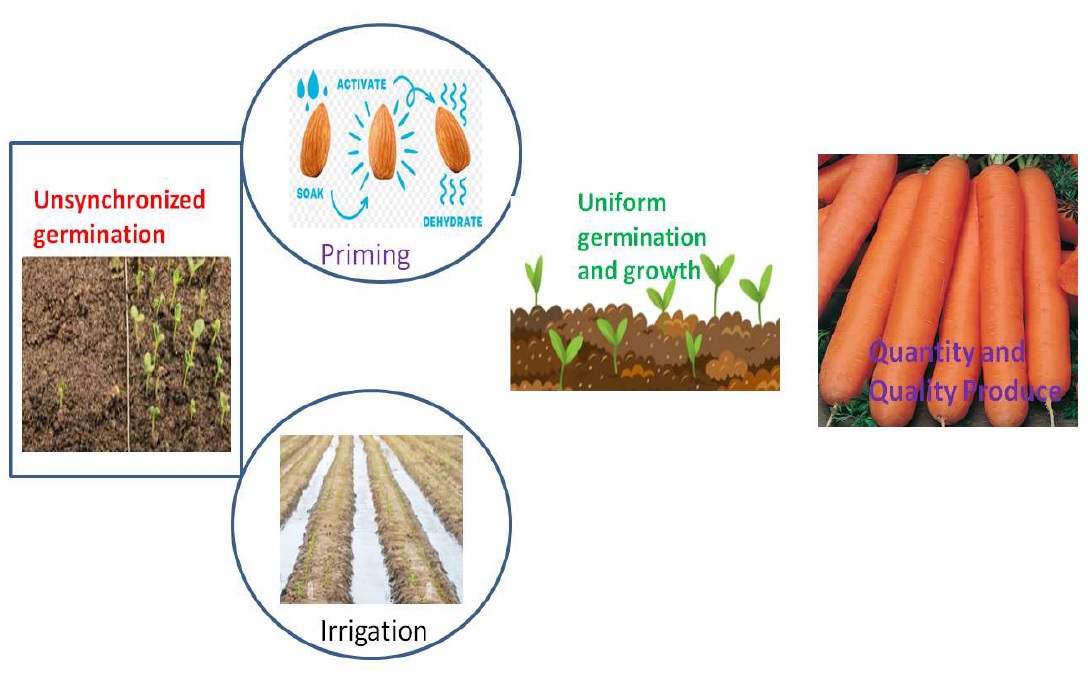Phenological and yield response of primed carrot (Daucus carota L) seeds under deficit irrigation

Published 2024-07-01
Keywords
- Carrot,
- irrigation interval,
- marketable yield,
- physiological changes,
- priming
How to Cite
Copyright (c) 2024 Seid Hussen Muhie, Fatuma Akele, Tadele Yeshiwas

This work is licensed under a Creative Commons Attribution 4.0 International License.
Abstract
Seedling emergence and stand establishment of carrot seeds are often slow and erratic which results in low productivity. Poor seed quality together with lack of pre-sowing seed treatments and improper irrigation management can be mentioned as the major factors that influence the yield and productivity of carrot. The present study was carried out with the objective to evaluate the effects of different seed priming techniques on early seedling establishment, growth and yield of carrot (Daucus carota L. cultivated variety Nantes) exposed to different irrigation intervals, under field conditions at Gerado, South Wollo, Ethiopia. Four seed priming treatments (no priming, hydro priming, halo priming and hormonal priming) and three irrigation intervals (4, 7 and 10 days) were combined as factorial RCBD in split plot arrangement with three replications. The irrigation intervals were assigned to main plots and the seed priming techniques to sub plots. Result indicated that the interaction effects of priming techniques and irrigation intervals significantly affected the phenological and yield parameters. Distilled water treatment in seven and ten days irrigation interval recorded the highest marketable carrot root yields of 33.73 t h-1 and 30.63 t h-1, respectively. Hence, hydro priming and seven days irrigation interval can be recommended for the production of carrot in the study area and similar agro-ecologies. Given the promising results obtained, further repetitions of the study are recommended to validate the use of these techniques in further locations and in different seasons.




